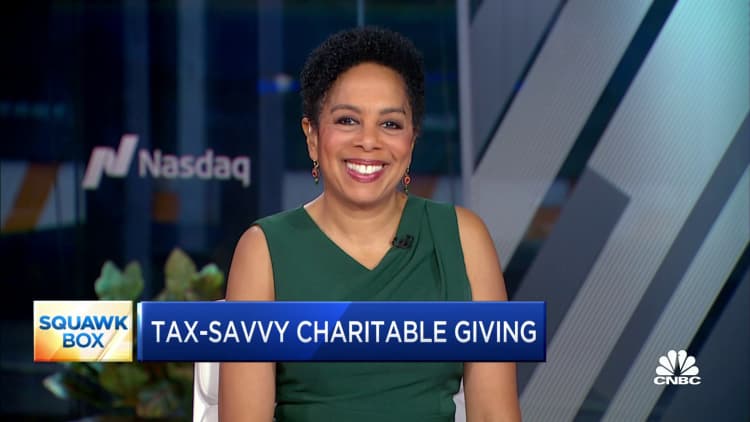If you're planning to donate to charity on Giving Tuesday, it can be tricky to claim a deduction on your taxes, experts say.
Americans funneled an estimated $3.1 billion to their favorite organizations in 2022, a 15% increase from 2021, according to GivingTuesday.
While tax breaks generally aren't the main reason for giving, a higher standard deduction has made charitable tax breaks harder to claim. Still, certain giving strategies offer more savings than others, experts say.
When filing your taxes, you claim the larger of the standard deduction or your total itemized deductions. The latter category can include charitable and medical deductions, state and local taxes and more.
In 2018, the Tax Cuts and Jobs Act nearly doubled the standard deduction, slashing the number of filers who itemized. For 2023, the standard deduction is $13,850 for single filers and $27,700 for married couples filing jointly.
Given these constraints, here are the most tax-friendly charitable giving strategies to consider, according to financial experts.
1. Qualified charitable distributions
If you're age 70½ or older with savings in a pre-tax individual retirement account, you should consider so-called qualified charitable distributions, or QCDs, "before anything else," said Juan Ros, a certified financial planner at Forum Financial Management in Thousand Oaks, California.
QCDs are direct transfers from an IRA to an eligible nonprofit organization, with a $100,000 limit per individual for 2023. (Starting in 2024, the limit adjusts for inflation.)
While there's no charitable deduction, the IRA distribution won't add to your adjusted gross income and QCDs reduce your IRA balance over time. QCDs can also satisfy required minimum distributions if you're age 73 or older.
QCDs are a great way to give to charity, especially for those with large IRAs and in a higher marginal tax bracket.Michael MayeOwner of MJM Financial Advisors
"QCDs are a great way to give to charity, especially for those with large IRAs and in a higher marginal tax bracket," said CFP Michael Maye, owner of MJM Financial Advisors in Gillette, New Jersey. He is also a certified public accountant.
2. Donor-advised funds
Another option, donor-advised funds, are a "great vehicle" for gifts when paired with profitable assets, according to Maye.
While donor-advised funds offer an upfront deduction, the fund acts like a charitable checking account, providing flexibility for future gifts.
Some investors prefer the simplicity of making a single donation to a donor-advised fund, rather than tracking gifts to multiple charities throughout the year, experts say.
3. Give profitable assets
Whether you're transferring money to a donor-advised fund or giving directly to a charity, experts recommend sending profitable assets, rather than cash.
Here's why: If you have profitable assets in a brokerage account, you can give those investments to bypass the capital gains taxes you'd otherwise owe from selling.
If you owned the assets for more than a year, you can deduct the full market value of donated assets, limited to 30% of your adjusted gross income, Maye explained. But the excess donation "can be carried over to the next five tax years," he said.
4. Bunching donations
Another way to exceed the higher standard deduction is by bunching donations, which is a popular strategy for donor-advised funds, experts say. Rather than making a gift every year, bunching combines those donations into a single year.
Lumping multiple years of gifts into a donor-advised fund can offer donors "more bang for their buck," said CFP Mitchell Kraus, owner of Santa Monica, California-based Capital Intelligence Associates.






